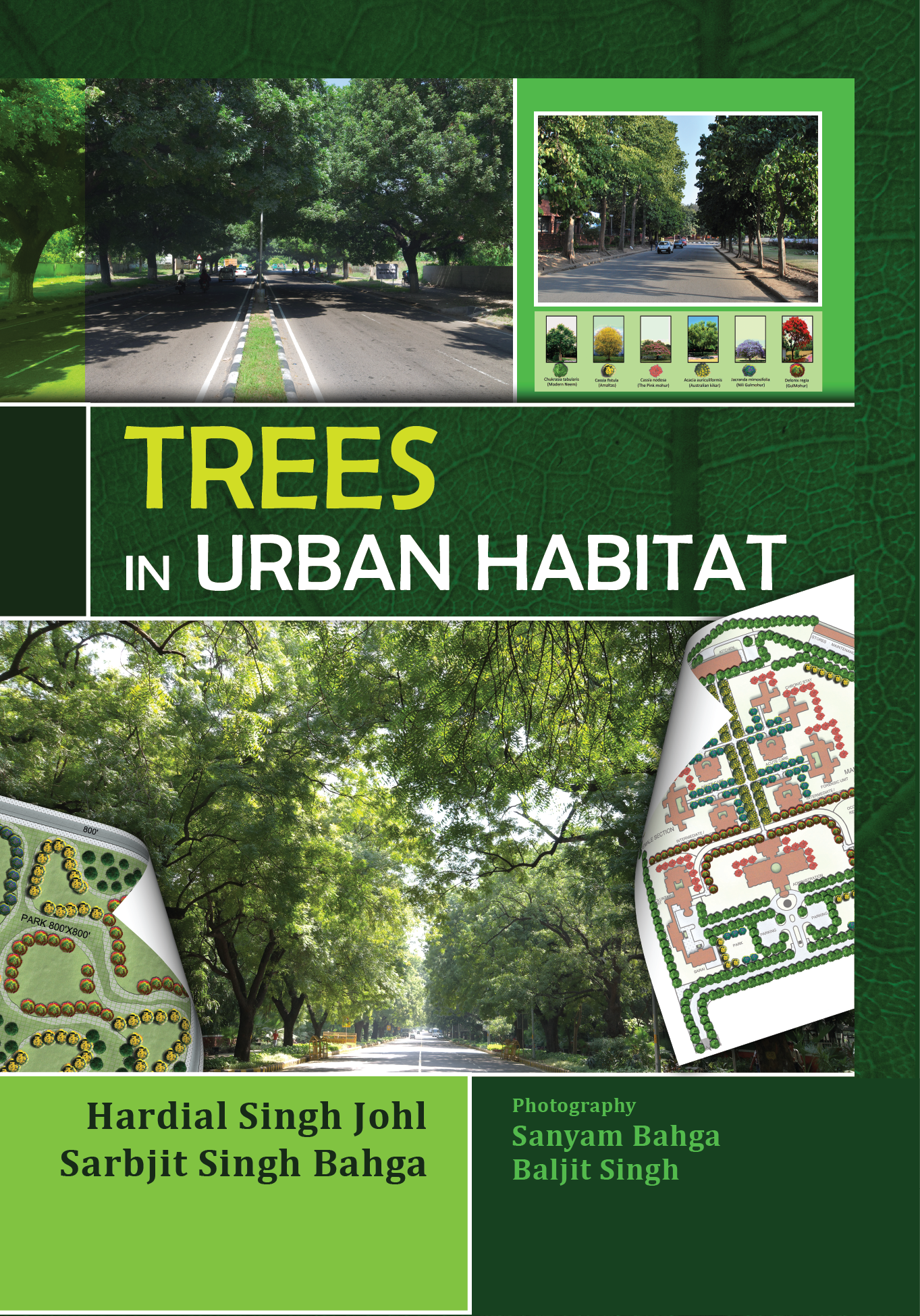Submitted by WA Contents
Trees In Urban Habitat
United Kingdom Architecture News - Sep 15, 2014 - 18:39 5925 views

Authors: Hardial Singh Johl & Sarbjit Singh Bahga Photography: Sanyam Bahga & Baljit Singh.
This is a "ground breaking" book for town planners, architects, landscapists and city planners who face the enormous task of creating and planning cities, buildings, parks and open spaces in the face of challenging unprecedented urbanization. It is an encyclopedia of knowledge on methods and techniques to solve the intricate problems of urban planning with tree plantation. This book is an excellent reference guide that cites New Delhi and Chandigarh as examples of cities where tree plantation was a priority. The book offers valuable concepts of tree planting accompanied with photographs and illustrations to describe the appropriate use of trees in different urban settings. It provides a detailed description of the fundamental requirements of tree plantation around roads, buildings, open spaces and parks taking into account the important considerations pertaining to the structure and textures of trees, their density and diversity in growth patterns, scale, colour, form and detail. The book includes "lessons learnt" with insights into opportunities for improvement in future planning and development. The one chapter pertaining to the concept of developing the entire city into a park makes this book unique and creative and a must read.
Applicability of this book in other countries of the world:
The work on trees in this book pertains mostly to New Delhi designed by Lutyens about a century ago and Chandigarh planned by Le Corbusier, the world famous architect which came in being six decades ago. Both these cities are located in the sub tropical regions of India which obtain extremes of climate in summer and winter months. The summers are very hot and winters are very cold. The major rainfall occurs mainly in monsoon season that is, July - August, and for the remaining year the weather remains dry with occasional showers. The trees appropriate for growing around roads, open spaces, parks and buildings as described in this book are suitable for the climate conditions obtained in both these cities. These trees however, would perform much better in tropical parts of the country where rainfall is much more during the year and summer and winter seasons are milder with little variations in temperature and are congenial for growth of the trees.
Some of the other countries of the world that have tropical and subtropical climate will also be suitable for growing many kinds of trees discussed in the book. The species in other countries may be different but the fundamental requirements for tree plantation in the urban habitat are applicable anywhere and everywhere in the world, wherever tree culture is done. Some of these countries where similar kinds of trees are grown are:
Burma (Myanmar), Thailand, Sri Lanka, Vietnam, Bangladesh, Malaysia, Pakistan, Java, Philippines, Laos, Indonesia, Sumatra, Singapore, Southern China, Taiwan, Cambodia, Tropical Australia and Northern Australia, Tropical Africa, Madagascar, Tropical south America consisting of Brazil, Argentina, Colombia, Peru, Bolivia, and Chile etc. Tropical areas in Mexico as well as south-east and central regions of United States of America also obtain suitable climatic conditions for growth of similar kind of species.
The book has been divided into following chapters:
1.Importance of Trees in Urban Planning
2.About Lutyens’ New Delhi
3.Le-Corbusier's Chandigarh
4.Important Chandigarh City Roads – Opportunities for Improvement
5.Some Fundamental requirements of tree plantation
6.Adopting standard cross-sections
7.Tree Planting Plans for Buildings
8.Entire City Planned as a Park – A Concept
9.Trees for City Roads
10.Flowering trees for City’s public parks, homes and other open spaces
11.Achieving 100% success in growing trees in urban areas
It is expected that every planner, administrator, architect, engineer, builder or anyone else connected with urban planning must read this book for better understanding of principles of tree plantation.
Publishers:White Falcon Publishing.
Pages:214
Size:8.5”x11” (Hard Cover)
Photographs:217 (Coloured)
Illustrations:35 (Coloured)
ISBN:978-1631029479
ISBN:978-1634153423
Available on:WA Books
